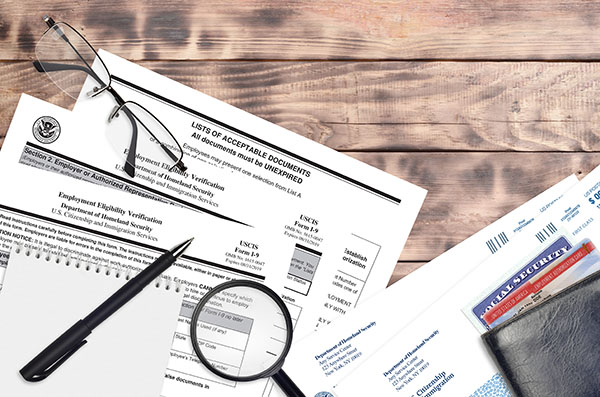Employer's Report: Employers Report Post
Read our CEA monthly newsletter, curated and written by our team of experts.
Missing out on the action?
Employee Talent Wars: Staying Ahead of the Curve
Posted by Kecia Hanson, Learning & Development Director on March 1, 2025
Tags: Recruiting
As we transition into 2025 and gear up for new recruiting and hiring efforts, it’s the perfect time to reflect on key insights from last year. We have highlighted statistics from the Society for Human Resources Management (SHRM) report: Talent Trends Report for 2024, revealing that employers faced recruiting and retention challenges last year. We are also giving you a sneak peek for expected trends to watch out for in 2025 to stay ahead of the curve!
2024 Recruiting Challenges
SHRM reported that in 2024, over 3 in 4 organizations had difficulty recruiting for full-time regular positions while nearly half had difficulties also retaining full-time regular employees.
The top 3 reasons these organizations gave for their challenges in recruiting were:
- a low number of applicants (60%)
- competition from other employers (55%),
- an increase in candidate “ghosting” (46%)
1 in 4 organizations reported that full-time regular positions they hired for in the last 12 months required new skills. The top two reasons driving these new skill requirements are organizational growth (55%) and changing technology (51%).
Large organizations were more likely to report difficulties recruiting for full time positions than small businesses (2-99 employees).
2024 Most Effective Recruiting Strategies
Within SHRM’s findings, a top ten list of most and least utilized recruitment strategies was included. The findings highlight the 4 strategies that were the most effective for organizations which included:
- Improving compensation
- Offering more flexible work arrangements
- Providing monetary incentives to candidates
- Training existing employees to take on hard-to-fill positions
2024 Retention Challenges
Almost half, 49% of organizations, reported having challenges retaining employees in 2024 as well. Top reasons provided include:
- Salaries are not competitive for the market
- Personal reasons
- Poor people managers/leaders
- Limited advancement opportunities
- Inability to offer flexible work arrangements, such as remote work
Now that we’ve reviewed some highlights of 2024, let’s take a peek at what trends are expected for 2025.
2025 Recruiting and Hiring Trends
- Skills-based Hiring and Upskilling: A focus on skills-based hiring as well as upskilling current employees will continue in 2025. Data from a recent McKinsey Global Institute survey suggests this shift is more than a temporary trend in hiring-it’s an economic necessity, with 87% of companies facing skill gaps now or expecting them within five years. At the same time, businesses will need to take a comprehensive approach to keeping talented staff members motivated, engaged, and aligned to reduce turnover.
- AI Powered Recruiting: Recruitment is evolving fast, and AI is at the heart of this transformation. According to a report by Recruiterflow, a third of hiring leaders have embraced AI in recruitment, and integrating AI into their systems. Organizations have reported using AI in the following ways for recruiting: to generate job descriptions, screen applicants, customize target job postings to specific groups, as well as communicate via chatbots with applicants during the hiring process.
- Learning and Development: Korn Ferry’s latest Workforce Survey found that 67% of employees would stick with a company if offered upskilling and advancement opportunities-even if they hated their job. In efforts to provide ongoing learning for employees and address skills gaps, some companies are implementing apprenticeships, entry level training programs, reverse mentorships and even partnerships with high schools in early career development programs.
- Employee Advocacy: Content shared by employees on social media gets 8 times more engagement than content shared through a brand’s official channels, according to Entrepreneur. It’s also 25 times more likely to be re-shared. In 2025, job seekers won’t just look at your job openings, they’ll look at your reputation as well. And what are job seekers looking for most? Trust in a company, opportunities for growth and a workplace that values them.
The recruiting and hiring landscape in 2025 will be shaped by a blend of technological advancements, shifting workforce priorities, and a growing emphasis on skills and employee engagement. Organizations that adapt to these trends by leveraging AI-powered tools, focusing on skills-based hiring, and fostering a culture of learning and development will be better positioned to attract and retain top talent.
CEA offers many relevant trainings to assist in upskilling your teams in the top critical essential skills needed in today’s workforce.
Call us today at 800.399.5331 to see how we can support you in making sure your employees feel they are part of a great company and a healthy work culture.
2025 Salary Increase Predictions
Posted by Cascade Employers Association Compensation Team on March 1, 2025
Tags: Compensation
As we start 2025, employers are keeping a close eye on salary trends to determine what this year might bring in terms of pay increases. With high increases over the last few years, will this year remain elevated? Early predictions suggest that overall salary increase budgets will remain relatively flat compared to 2024, hovering around 3.7%.
Several factors are influencing these projections, and the landscape may continue to evolve throughout the year:
- A Steady Rise in Salaries: Employers are still grappling with heightened competition for certain roles, which has driven up salary benchmarks in some areas. Retaining top talent necessitates maintaining competitive compensation.
- High Inflation and Cost of Living Considerations: Inflation has moderated in some regions, but the cost of living continues to weigh heavily on workers and their families. Many organizations are tailoring their compensation strategies to address these challenges, particularly in high-cost areas.
- The Impact of Remote Work Trends: Remote work continues to influence salary trends. Employers are increasingly evaluating compensation based on geographical location, often offering adjusted salaries for remote workers in lower-cost regions. This trend has also allowed organizations to tap into a broader talent pool, balancing cost savings with access to skilled professionals.
- Government Regulations and Policies: Changes in labor laws and government policies, such as minimum wage increases, are shaping compensation strategies. Employers need to stay compliant while navigating the financial impact of these regulations on their payroll budgets.
- Labor Union Negotiations: In industries with strong union presence, collective bargaining agreements play a significant role in determining salary increases. These negotiations often set the tone for wage trends within their respective sectors.
For employers, understanding market trends and being proactive will remain crucial. While there are predictions for 2025 salary increases, much will depend on broader economic conditions and individual organization performance. Staying ahead of these trends will be key to navigating the year ahead. As a CEA sister association we work with employers who are navigating these trends and we offer discounted rates to CEA members. Interested in a quote? Contact our Compensation Team at: compensation@cascadeemployers.com.
Spring Training for Your Supervisors!
Posted by Mari Bradford, Senior HR Director on March 1, 2025
Tags: Compliance, Training
Spring training is in full swing, which for many baseball fans means that our favorite teams have gathered in Arizona or Florida to practice and prepare for the start of the regular season at the end of the month. Spring is also a great time to audit your HR practices to ensure your company is compliant with all required training for your employees. If your company has five or more employees, there are two key training requirements to be aware of: Mandated Reporter and Harassment Prevention.
Mandated Reporter Training
This California required training came into effect back in 2021 under AB 1963. If your company employs at least one minor (an employee under the age of 18) and also has five or more employees, it is your responsibility to provide training to your employees who are deemed to be mandated reporters.
Mandated reporters include direct supervisors of minors, as well as any Human Resources (HR) employees authorized to receive complaints of misconduct on your company’s behalf. HR employees and supervisors of minors are required to report any reasonably suspected child abuse and neglect that they learn about in the scope of their employment. The failure to report this abuse may result in criminal penalties and even jail time.
CEA’s one-hour training will ensure that you satisfy your compliance obligation and allows your employees to engage in an interactive setting, with hypothetical questions and various scenarios.
Harassment Prevention Training
Remember, if you have five or more employees, all employees and supervisors are required to attend a Harassment Prevention training every two years. Non-supervisory employees must attend a one-hour training and manager and supervisors must attend a two-hour training class.
New hires and individuals promoted into a supervisory role must complete the training within six months of their hire date or promotion. Visit our Harassment Prevention Training Page for more information on training options to satisfy your compliance obligations.
Five Pro Tips for Managing Family and Medical Leave Requests
Posted by Virginia Young, HR Compliance Director on March 1, 2025
Tags: Compliance, Leaves of Absence
CFRA, or the California Family Rights Act, and it’s federal counterpart, FMLA (the Family and Medical Leave Act), provide eligible employees with unpaid, job-protected leave for reasons such as the health of the employee or their family member, bonding with a new child, or a family member’s military service. With the exception of FMLA military caregiver leave, an eligible employee’s leave entitlement is 12 weeks in a “twelve-month period.”
CFRA and FMLA are both highly technical laws, that can make administering these common leaves seem like a full-time job. Below are five big picture tips to keep leave administration running smoothly:
1. Know Whether Your Business is a “Covered Employer” and Which Employees are “Eligible Employees”
Employers doing business in California who have five or more employees are “covered employers” under CFRA. Employers of 50 or more employees are “covered employers” under FMLA. Full-time and part-time employees located anywhere in the US count towards these thresholds.
Employees who have worked for your business for 12 months and have worked 1250 hours during the 12 months before leave is to begin are “eligible employees” under CFRA. FMLA has these eligibility requirements plus an additional requirement that the employee’s worksite have least 50 employees within 75 miles. CFRA does not have this additional requirement, which means that workers at very small worksites may be eligible for CFRA leave.
2. Have a Written Family and Medical Leave Policy
If you are a “covered employer” under either CFRA or FMLA, you should have a written CFRA/FMLA policy, as applicable. Having a written policy provides helpful information to employees and guidance to HR staff. Also, if a “covered employer” publishes an employee handbook that describes other kinds of personal or disability leaves, regulations require that the handbook include a policy. This is in addition to poster requirements.
3. Define and Communicate the “Twelve-Month Period”
Employers trying to determine whether an employee has used their CFRA/FMLA leave often ask what the “twelve-month period” means. Employers must select one of the calculation methods below, notify employees, and apply the chosen method consistently and uniformly to all employees:
- the calendar year or any fixed 12-month period
- the 12-month period measured forward from the date any employee’s first leave begins, or
- a “rolling” 12-month period measured backward from the date an employee uses any leave.
If an employer does not choose a method and notify employees, the method with the most beneficial outcome for each employee must be used. This can be difficult to administer.
4. Recognize Requests for CFRA/FMLA Leave and Respond Timely
Employers must respond to leave requests by providing the employee with notice of their eligibility and their rights and responsibilities within five business days of the employee’s request for leave. Note that the employee need not expressly mention CFRA or FMLA or fill out a formal leave request form. For example, an employee saying they need time off to care for a parent is sufficient to put an employer on notice.
Your response should also include notice of medical or other certification requirements. Group health benefits must continue during leave, so you may need to make arrangements with the employee regarding how they will pay their share of premiums.
5. Don’t Forget to “Designate”
Within five business days after you have enough information to determine whether the leave is for a qualifying reason (i.e., after receiving a medical certification), you must apprise the employee of whether the leave will be counted as CFRA or FMLA or both-or whether the request is denied. Once an employee has returned to work, you will probably not be able to count the time against their leave entitlement.
Need additional guidance on administering family and medical leave? Members can refer to our Leave of Absence Checklist, which links to the required forms on the HR Forms Page. Members also have access to our Leaves of Absence Toolkit, and you can always call us at 800.399.5331.
Kim’s Message: CEA is on the Road
Posted by Kim Gusman, President & CEO on March 1, 2025
Tags: Training & Development
As we move toward spring and warmer weather, I’m excited to hit the road with our CEA team twice this month to present at two events!
How to Be A Coach, Not a Boss at the Elevate & Inspire Business Summit in Red Bluff, CA-March 13
Think back to the worst boss you’ve ever had-what did they do or say to win this title? Now think about the best boss you’ve ever had-I’m guessing they had opposite traits. I’ve only had two terrible bosses in my career, but the one thing they both had in common was a long outdated, traditional authoritarian leadership (“it’s my way or the highway”) style. I quit both of those jobs.
Today’s successful leaders understand that it’s more important to coach people to success instead of bossing them around and telling them what to do. When leaders don’t explain why they are making certain decisions, when they don’t listen to their “players”, when they send mixed messages instead of direct clear communication, they generally have very little buy in from the team and a lot of turnover. Winning teams on the other hand have strong retention, meet their goals, and because they have leaders who ask for input, each players strengths are utilized.
I hope you can join me on March 13 at a half day leadership summit in Red Bluff, where I will be joined by our own Jessica Rivera and more speakers to share some traits, tips and secrets of good leaders with a live audience.
How to Spot a Bully at the HR Pro Conference 2025 in Temecula, CA-March 25
Get ready for a full action-packed day! CEA and Train Me Today are thrilled to invite you to the HR Pro Conference 2025 on March 25, an exciting in-person conference designed just for HR pros who want to boost their skills, make awesome connections, and stay ahead of the curve!
The day kicks off from 8:00 a.m. with registration, breakfast, and networking-an opportunity to enjoy a light breakfast and connect with fellow HR professionals. After introductions, Dana Mayhew, Founder and CEO of TDC Consulting will present HR Challenges 2025: Real and Imaginary. Taking you through some of the most bizarre overtime rules and legislative near misses.Lisa Harris, Partner at Shepard Mullin presents Mastering California’s Complex Leave Laws-a deep dive into California and federal leave laws, covering the latest updates on paid sick leave and family leave. Learn Practical Strategies for Preparing Your Workforce for Change from Mike Hayden, Founder and CEO of Infinium helps you tackle both new and existing laws while maintaining productivity and morale.
After lunch, I will join Astrid Servin in showing you How to Spot a Bully and What to Do About It. The day wraps up with HR Challenges in a Remote World will provide insights into how California labor laws apply to remote employees, focusing on compliance topics like expense reimbursement and workplace safety. The event will wrap up from with Closing Remarks and Drawings, giving you the chance to win great prizes!
We can’t wait to see you there! Seating is limited, so register today for just $90 per person! Registration includes a full day of trainings, breakfast and lunch.
What Do Trump’s Executive Orders Mean For California Employers?
Posted by Virginia Young, HR Compliance Director on February 27, 2025
Tags: DEI, EEOC, Executive Orders, Gender Identity
This article was updated on April 1, 2025.
President Trump issued twenty-seven Executive Orders (“EO”s) in the first two days of his administration. Three of them in particular have left employers concerned and confused about the potential impact on their Diversity Equity and Inclusion (DEI) and Equal Employment Opportunity policies. Employers in California, where state anti-discrimination laws provide protections broader than existing federal laws, face particular challenges piecing it all together.
This is an evolving area, with multiple lawsuits pending. A federal district court in Maryland issued a nationwide preliminary injunction (“PI”) on February 21 barring the President’s Administration from taking a number of actions mandated by two of the EOs because the Court found them to be overly vague and/or potentially in violation of free speech rights. The PI has brought a welcome pause to some of the EOs’ directives, but the Administration has already appealed the ruling. On March 14, 2025, the 4th Circuit Court of Appeals issued a stay of the district court’s injunction pending appeal. This means that the Trump Administration can enforce the EO’s while the court considers the appeal of the PI.
Below we outline what California employers should know now:
“Ending Radical and Wasteful Government DEI Programs and Preferencing” (EO 14151)
EO 14151 directs federal government agencies to eliminate their own DEI programs. It does not address private employers. However, the EO requires federal agencies to terminate all “equity-related” grants or contracts and all DEI or DEIA performance requirements for contractors or grantees to the extent allowed by law, which would affect federal contractors and grantees.
- The PI prohibits termination, cancellation, blocking, or freezing of contracts or grants on the basis of the EO’s directive. However, as of March 14, 2025, a Court has stayed the PI pending appeal of the PI by the Trump Administration.
“Ending Illegal Discrimination and Restoring Merit-Based Opportunity” (EO 14173)
EO 14173, takes the position that many DEI programs, including private employer programs, create discriminatory “preferences” that violate federal civil rights laws such as Title VII, which applies to employers of 15 or more employees and prohibits discrimination in employment because of sex, race, color, religion, and national origin. The stated purpose of the EO is to ensure that the federal government is enforcing civil rights laws “by ending illegal preferences and discrimination.”
EO 14173 and the PI
As discussed here, EO 14173 directs a number of actions in furtherance of its purpose, including:
- Revokes federal contractor and subcontractor affirmative action requirements (other than for veterans and individuals with disabilities) which have been in place since the 1960s.
- The PI does not change this. However, as of March 14, 2025, a Court has stayed the PI pending appeal of the PI by the Trump Administration.
- Directs federal agencies to require contractors and grant recipients to certify that they do not operate any DEI programs that violate federal anti-discrimination law.
- The PI prohibits requiring this certification or enforcement actions based on the certification. However, as of March 14, 2025, a Court has stayed the PI pending appeal of the PI by the Trump Administration.
- Requires the Attorney General to provide recommendations for combatting illegal DEI through enforcement of federal civil-rights laws and identifying potential high profile civil compliance investigations.
- The PI prohibits enforcement actions by the Administration based on this directive, but does not prohibit the Attorney General from preparing the report or engaging in the investigation. However, as of March 14, 2025, a Court has stayed the PI pending appeal of the PI by the Trump Administration.
Does EO 14173 Make DEI Illegal?
No. EO 14173 does not change the law on employment discrimination or make DEI illegal. However, DEI programs can violate civil rights laws. Employment decisions based on a protected characteristic, whether part of a DEI effort or otherwise, have always been illegal.
Does the PI Mean We Can Forget About the Anti-DEI EOs?
Also a No. The federal government and private lawsuits can still enforce Title VII violations. Also, the PI is immediately appealable. On March 14, 2025, a Court stayed the PI pending appeal of the PI by the Trump administration, but the future of that case and the EOs is still pending.
What Should Employers Do About DEI Now?
Some employers may choose to adjust their DEI programs in light of EOs 14151 and/or 14173.
All employers should review their DEI and other programs to ensure:
- Employment decisions, such as hiring and promotions, are objective, job-related and merit-based; and
- Compensation meets California’s strict pay equity laws requiring equal pay for substantially similar work regardless of race, gender or ethnicity.
“Defending Women From Gender Ideology Extremism and Restoring Biological Truth to the Federal Government” (EO 14168)
EO 14168‘s, stated purpose is to “defend women’s rights and protect freedom of conscience by … recogniz[ing] women are biologically female, and men are biologically male.” To this end, the EO:
- States the federal government will recognize only two sexes-male and female.
- Defines “sex” as an immutable biological classification and rejects the concept of gender identity within this definition.
- Rejects the interpretation of existing U.S. Supreme Court Title VII caselaw as requiring gender identity-based access to single-sex spaces.
The PI does not address EO 14168, but other lawsuits have been filed.
Does EO 14168 Change The Law?
EO 14168 does not change the law on employment discrimination, but there could be implications for private employers on the horizon. EO 14168 calls for:
- Guidance from the Attorney General “to ensure the freedom to express the binary nature of sex and the right to single-sex spaces in workplaces and federally funded entities covered by the Civil Rights Act of 1964.”
- Agency (including EEOC) enforcement of those rights.
- Agency-imposed requirements on federally funded entities, including contractors, to achieve the policy of the EO.
- Rescinding agency guidance that is “inconsistent with” the EO.
- A proposed bill to codify the EO’s definitions relating to sex.
EEOC’s Response To EO 14168:
Acting EEOC Chair Andrea Lucas has already taken some steps to implement EO 14168, such as:
- Ending the use of the “X” gender marker in the charge intake process, and
- Announcing the agency’s priority “to defend the biological and binary reality of sex and related rights, including women’s rights to single-sex spaces at work.”
However, EEOC Chair Andrea Lucas has stopped short of rescinding recently issued EEOC guidance protecting gender identity, including affirming the right under Title VII to access bathrooms consistent with gender identity and to be free of intentional and repeated misgendering. She has acknowledged that she cannot remove or modify the Guidance without a majority vote of the full Commission. A voting quorum is currently lacking, following President Trump’s termination of two members in late January.
California’s Protections Remain
While EO 14168 could signal a rollback of federal protections, California’s protections are clear:
- FEHA expressly includes gender identity and gender expression as protected classes.
- FEHA regulations require that employees have a right to:
- Use a restroom or locker room that corresponds to their gender identity, regardless of their sex assigned at birth, and
- Use and be addressed by the name and pronouns that correspond with their gender identity or gender expression.
- Employers are required to include gender identity and gender expression in mandatory harassment prevention training.
What Should Employers Do About EO 14168 Now?
Continue to follow applicable law, monitor federal developments, and consult counsel if you have concerns relating to your federal grants or contracts. EO 14168 does set the stage for federal legislative developments and court decisions. Employers may need to consult counsel in the event a conflict emerges between their obligations under California and federal laws putting them between a rock and a hard place.
To Sum It Up:
President Trump’s Anti-DEI and Gender Ideology Executive Orders do not change employment laws applicable to private employers, or the protections California law provides employees. However, we can expect a continued rollercoaster ride, including further litigation, EOs, agency actions, and proposed legislation which employers should continue to monitor.
It’s Time to Sunset Most COVID-19 Regulations
Posted by Virginia Young, HR Compliance Director on February 20, 2025
Tags: Compliance, COVID-19, Employers Report
COVID-19 is not gone, but most of Cal/OSHA’s COVID-19 Non-Emergency Regulations for employers ended on February 3, 2025. Those regulations apply to California employers not subject to the Aerosol Transmissible Disease Standard and include requirements such as maintaining COVID-19 Prevention Plans, excluding COVID-19 cases from the workplace during infectious periods, providing notices and COVID-19 testing to close contacts of COVID-19 cases, masking requirements, and, of course, recordkeeping obligations.
Beginning February 3, 2025, only the recordkeeping obligations remain.
Employers must still:
- Record all COVID-19 case information, which includes the employee’s name, contact information, occupation, location where the employee worked, the date of the last day at the workplace, and the date of the positive COVID-19 test and/or COVID-19 diagnosis
The COVID-19 Emergency regulation requires employers to record this information until February 3, 2026. Personal identifying information of COVID-19 cases or persons with COVID-19 symptoms, and any employee medical records must be kept confidential unless disclosure is required or permitted by law.
Employers continue to have a duty to provide a safe workplace and maintain their Illness and Injury Prevention Plans. They are encouraged to continue to monitor Cal/OSHA’s website for guidance and developments on safety-related requirements. CEA’s safety partners can provide employers with valuable assistance.
Cal/OSHA Posting Reminder—February 1
Posted by Giuliana Gabriel, Vice President of Human Resources on February 13, 2025
Tags: Compliance, Employers Report, Safety
This is your reminder that California employers must post their 2024 annual summary of work-related injuries and illnesses via Form 300A in a visible and easily accessible area at each worksite. Employers must complete and post this form from February 1 through April 30 each year, even if no work-related injuries or illnesses occurred. After April 30th, Form 300A may be taken down, but must be kept on file for a minimum of five years. Cal/OSHA offers an e-tool for employers as well.
Information on Form 300A
Employers must prepare a summary of the prior year’s (i.e., 2024) illnesses and injuries for each establishment. Employers should create this summary based on Form 300, which is the employer’s log of every recordable injury and illness. “Recordable” injuries and illnesses include those that are work-related and involve one of the following:
- Medical Treatment Beyond First Aid;
- Restricted Work Activity or Job Transfer;
- Days Away From Work;
- Loss of Consciousness; or
- Death
*Note: Employers with fewer than 10 employees or whose organization is classified in a specific, low-hazard category (found in Table 1, Appendix A, Section 14300.2) are exempt from the recording requirements.
Many large employers in California must also comply with the requirements for electronic submission of workplace injury and illness records by March 2nd each year. This includes:
- All establishments with 250 or more employees, unless specifically exempted by section 14300.2 of title 8 of the California Code of Regulations; or
- Establishments with 20 to 249 employees in the specific industries listed in Appendix H of Cal/OSHA’s regulations regarding occupational injury and illness records.
Learn more about electronic posting requirements here.
Certification of Form 300A
Before you post your Form 300A, the annual summary must be certified by:
- An owner;
- A corporate officer ;
- The highest-ranking person at the establishment; or
- The immediate supervisor of the highest ranking person at the establishment.
Don’t forget about your other workplace posting requirements, including mandatory state and federal notices! Order your all-in-one Labor Law Poster on CEA’s store today.
When ICE Shows Up at Your California Business
Posted by Eli Nuñez, HR Director on February 6, 2025
Tags: Compliance, Employers Report
From the first day of Donald Trump’s candidacy for reelection, cracking down on immigration was a focal point of his campaign. Under his previous administration, the president vowed to build a wall to keep out undocumented immigrants. Now in his second term, he has signed executive orders aimed at implementing an aggressive immigration enforcement agenda including mass deportations. Employers in California and other sanctuary states are likely to see an uptick in immigration enforcement.
The San Francisco Standard reported Kern County and its surrounding areas have been subject to Immigration and Customs Enforcement (ICE) unannounced raids as early as mid-January 2025, with agents reportedly targeting workers at stores, gas stations, and along the Highway 99 corridor. Employers should be prepared for these actions as well as noticed audits of their I-9s.
Notice of I-9 Inspection (NOI)
Federal law requires that every employee on your payroll have an I-9 form on file proving their authorization to work in the U.S. These forms must be completed within three days of an employee’s hire date. A government audit of an employer’s I-9s starts with a Notice of Inspection (NOI), typically giving the employer 3 days to provide its records. Penalties for violations, including document deficiencies, can be steep.
Once the government NOI is received, California employers have additional obligations to their employees. Employers must post a notice for the employees within 72 hours of receiving the NOI in the language the employer usually uses to communicate with employees.
If the inspection of employee records results in ICE identifying an employee as potentially lacking proper work authorization, or having deficiencies in their documentation, the employer must provide the employee, a copy of the government findings relating to the employee, as well as other information within 72 hours. The notice must be physically given to the employee at the workplace or, if this is not possible, by mail and/or email.
Employers who operate in a union environment must also provide a copy of these notices to the employee representatives within the same timeframe.
CEA members can learn more about their I-9 obligations and audit notice requirements by downloading the following toolkits and forms from our HR Forms page:
- Recruiting and Hiring Toolkit
- I-9 Self Audit Toolkit
- I9/Employee Records Government Inspection Fact Sheet
Workplace Raids
A workplace raid will present a much different scenario. In some cases, ICE may be accompanied by other agencies or appear in large numbers. This shock and awe approach may be unnerving and disrupt the workplace. The best thing an employer can do if they feel at risk of a visit is to have a plan in place.
The plan should address:
- Who needs to be alerted if ICE shows up or a notice is received? Management, legal counsel, employee representatives?
- Who is authorized to speak to law enforcement agents on behalf of the company?
- What information should be gathered from the agents? (agency, names, badge numbers, cards, etc.)
- Is there a place for the agents to wait, such as a conference room or office, that will limit workplace disruptions?
Putting the plan into action:
- Stay calm. Be professional and limit your answers or comments.
- Agents should present a warrant. Review the warrant carefully to ensure its validity and scope. You can deny access to nonpublic areas of the workplace and refuse to turn over documents that are not covered by the warrant. Consult legal counsel.
- Cooperate, but do not volunteer or provide information beyond what is required. Maintain privacy by limiting conversations in public areas and not leaving documents or screens out in the open, etc.
- Document, Document, Document: take names and badge numbers or ask the agents for their business cards. Take note of how many agents were present and if any other law enforcement agencies accompanied them.
Resources for Employees
Employees who are fearful of ICE may not be ready to ask for help. There are still some steps you can take:
- Make sure all your employees’ contact information and emergency contacts are up to date. Should one of your employees happen to be caught up in an immigration raid, you want to be able to reach their designated contact. This may be the person to care for the employee’s family in their absence or contact legal counsel on their behalf.
- Make sure employees know their rights. The State of California’s Office of the Attorney General and Civil Rights Department have resources for California’s immigrant communities, including information on rights and protections and access to free and low-cost legal assistance. The American Civil Liberties Union also maintains a page, both in English and Spanish, informing employees of their constitutional rights.
- Perform an I-9 audit to address issues in advance of an audit or raid and present clean, organized, and complete I-9 files should the need arise.
CEA has partnered with Cascade Employers Association to offer a FREE 2025 USCIS Immigration Employment Guide available to all employers.
Harassment and Discrimination Concerns
Campaign promises and political rhetoric may find their way into the workplace. With increased focus on immigration enforcement and the declaration of a “national emergency” at the southern border, disagreements can lead to heated arguments, or worse, violation of your harassment and discrimination policies and/or the law. The best way to combat this is to ensure that your harassment policy is communicated and training is up-to-date. Your policy should include all the protected classes and your employees and supervisors should have gone through their training within the last two years. New hires and recently promoted supervisors should be trained within six months of their hire or promotion while seasonal or temporary employees must be trained within 30 calendar days of hire or 100 hours worked, whichever occurs first.
CEA can assist your company with I-9 audits, Harassment Prevention Training, and other resources. Give us a call at 800.399.5331 to get started.
Kim’s Message: How Will You Thrive in 2025?
Posted by Kim Gusman, President & CEO on February 1, 2025
Tags: Employers Report, Leadership
For the first time in many years, I didn’t make any New Year’s Resolutions for the year ahead. Apparently I wasn’t alone, as I recently read that the majority of people who make resolutions fail to follow through on them because they often require us to change something we do naturally. In fact, Baylor College of Medicine reported that 88% of people who set New Year’s resolutions failed before the end of January.
So, this year, instead of making drastic changes, I am going to focus on playing to my strengths. I’ve long been a believer in the CliftonStrengths (Strengthsfinder assessment by Gallup), having taken my first one when I contemplated leaving a career in manufacturing. Years later, I took the assessment again following a painful divorce. Gallup has scientifically proven that when I spend more time investing in and nurturing my natural talent,s I am more likely to grow, succeed and thrive! Now this doesn’t mean I’m going to overlook the areas where I need to improve (being a better listener, being more patient, etc.), but I do know that whenever I lean more into my strengths, it benefits me as well as those around me. When I focus on my natural gifts, I am more productive and make more impactful contributions to the CEA team as a whole.
At CEA every employee takes a StrengthsFinder® assessment during the new hire orientation. The new employee learns more about their top five strengths and the rest of our team can quickly tap into their talents. We’ve also created a grid that lists all of our team members, broken down into four domains: Executing, Influencing, Strategic Thinking, and Relationship Building, to make sure we have the right people in the right positions.
People’s strengths may change over the years a bit, based on where they are at in life, however, there a few core talents generally remain the same. Over the years, my top five strengths have fluctuated a bit, but two or three are always there. My current top five strengths serve me well in my role as CEO of CEA:
- Input: I’m a curious person who wants to know more and is constantly acquiring information, facts and knowledge.
- Woo: I’m energized by meeting new people and enjoy having the opportunity to build a rapport with the new people I meet.
- Communication: People with dominant Influencing themes like Communication take charge, speak up and make sure others are heard.
- Positivity: People in this “theme” generally have contagious enthusiasm. They are upbeat and can get others excited about what they are going to do.
- Responsibility: I take psychological ownership of what I say I will do. And, I am committed to values such as honesty and loyalty.
We are fortunate to have two (2) Certified Coaches on our team who work with our staff and hundreds of employers across California, to leverage personal and collective strengths and drive success.
Find Your Natural Strengths
Join us on February 12, 2025 for Know Your Strengths to Thrive in 2025, a two-hour webinar to learn more about your top five talents. Over 31 million people have already taken the CliftonStrengths® assessment (StrengthsFinder®), to elevate their organizational performance and foster a positive workplace culture.
Want to create greater career satisfaction for your team? We can work with your team onsite or virtually to help make meaningful changes, instead of New Years’ Resolutions so that we all Thrive in 2025!
Love is a Disrupter: Navigating Workplace Romance
Posted by Astrid Servin, PHRca, HR Director on January 30, 2025
Tags: Employers Report, Policies
Project deadlines, work responsibilities, and commitments are all part of our daily jobs, but office romance can sometimes disrupt the focus needed to meet those expectations. Given how much time we spend at work, it’s no surprise that office romances happen. Knowing how to navigate these situations and being prepared when Cupid strikes can help prevent unnecessary heartaches and workplace challenges.
Compliant Policies
CEA recommends having a Dating in the Workplace policy that directs employees to notify their supervisor when a relationship begins and reminds them to conduct themselves in a professional manner during and after a relationship. Should the consensual relationship end, it directs employees on how to behave and where to report incidents that make them uncomfortable.
Did you know that the Civil Rights Department (CRD) requires employers to have a compliant harassment prevention policy? This policy reviews many important areas such as unacceptable behavior, gives examples of abusive conduct, addresses protected classes, and directs employees on how to report incidents that make them uncomfortable. CEA Members can access your policy on the HR Forms page.
Poster Requirement
The CRD also publishes and requires employers to post an anti-harassment poster in a conspicuous place where employees gather. The poster includes websites and phone numbers to report harassment outside of your company. Visit the CEA store to purchase your poster.
Training Requirement
In California, the Fair Employment Housing Act (FEHA) requires employers to provide one (1) hour of training for employees and two (2) hour of training for managers every two years. New employees should receive their training within six months of being hired. Having this compliance requirement in check will remind employees about acceptable behavior both in and out of work. It will also help train your managers on spotting problems or concerns and addressing them timely.
Prevention
As required by law, employers must take steps to prevent harassment from occurring in the workplace and take immediate action to correct it when it occurs. Training, policies, posters, and open-door policies are all great ways to show prevention. In addition, CEA recommends frequently checking in with employees, having an anonymous Employee Action Hotline, and having conduct policies in place.
While we all hope for workplace romances to remain positive and drama-free, it’s always a good idea to be prepared. If you need assistance with employee surveys, an Employee Action Hotline, crafting a policy, or even a comprehensive CA complaint handbook template, don’t hesitate to reach out to CEA.
Member Benefit Highlight + Upcoming Events
Posted by California Employers Association on January 30, 2025
Tags: Employers Report, Training & Development
CEA Member Benefit Highlight: HR Forms & Tool Kits
If you have read the other articles in this month’s newsletter or scanned through a recent blog article, you are probably familiar with out HR forms page. This important page of the CEA website includes hundreds of forms on topics ranging from benefits, PTO, leaves of absences, harassment, pay and much more. While some forms are available to the public, there are many useful forms that are available exclusively to CEA members.
If you are looking for something a little more robust that a singular form, HR Tool Kits may be what you are looking for. CEA’s HR Tool Kits are all-in-one guides with required & recommended forms, to help you provide the appropriate information, as well as the documents you need. And as always, our HR Directors are available to assist with any questions you have.
Upcoming Event Schedule Dates Event Type June 2025 Jun 11
 Virtual Event
Helping Managers Navigate Conflict and Hard Conversations
12:00 PM – 1:30 PM
REGISTER NOW
Jun
18
Virtual Event
Helping Managers Navigate Conflict and Hard Conversations
12:00 PM – 1:30 PM
REGISTER NOW
Jun
18
 Virtual Event
2025 Mid-Year Labor Law Update
10:00 AM – 11:00 AM
REGISTER NOW
Jun
25
Virtual Event
2025 Mid-Year Labor Law Update
10:00 AM – 11:00 AM
REGISTER NOW
Jun
25
 Virtual Event
CEO Monthly Roundtable Series
9:00 AM – 10:30 AM
REGISTER NOW
July 2025
Jul
8
Virtual Event
CEO Monthly Roundtable Series
9:00 AM – 10:30 AM
REGISTER NOW
July 2025
Jul
8
 Virtual Event
CEA Member Benefits Overview
1:30 PM – 2:00 PM
REGISTER NOW
Free for Employers!
Jul
9
Jul
30
Virtual Event
CEA Member Benefits Overview
1:30 PM – 2:00 PM
REGISTER NOW
Free for Employers!
Jul
9
Jul
30
 Virtual Event
Mastering Interpersonal Skills Series
Wednesdays
4-Part Series
July 9 10:00 AM – July 30 12:00 PM
REGISTER NOW
Jul
10
Virtual Event
Mastering Interpersonal Skills Series
Wednesdays
4-Part Series
July 9 10:00 AM – July 30 12:00 PM
REGISTER NOW
Jul
10
 Virtual Event
Harassment Prevention Training for Employees and Supervisors
10:00 AM – 12:00 PM
REGISTER NOW
Jul
15
Virtual Event
Harassment Prevention Training for Employees and Supervisors
10:00 AM – 12:00 PM
REGISTER NOW
Jul
15
 Virtual Event
FREE: Form I-9 Overview (Presented by USCIS)
10:00 AM – 11:00 AM
REGISTER NOW
Jul
23
Virtual Event
FREE: Form I-9 Overview (Presented by USCIS)
10:00 AM – 11:00 AM
REGISTER NOW
Jul
23
 Virtual Event
CEO Virtual Roundtable Series
Exclusively for CEO’s
9:00 AM – 10:30 AM
REGISTER NOW
Panel only seen by widget owner
Edit widget
Views
0%
Extend Limit
Share
Virtual Event
CEO Virtual Roundtable Series
Exclusively for CEO’s
9:00 AM – 10:30 AM
REGISTER NOW
Panel only seen by widget owner
Edit widget
Views
0%
Extend Limit
Share
 Tell your customers about
Tell your customers aboutnew website functionality!

